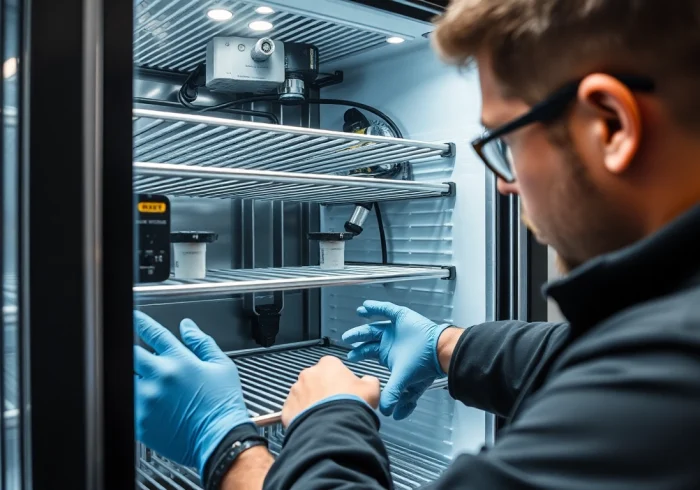Understanding Telephone Data Collection
Definition and Purpose
Telephone data collection is a method used widely in research and surveys to gather insights and information from selected respondents via telephone. This process usually involves predetermined questions which the interviewer follows while conducting the interview. The primary purpose of telephone data collection is to acquire qualitative and quantitative data efficiently, often enabling researchers to glean significant insights in a relatively short amount of time. By employing techniques like Computer-Assisted Telephone Interviewing (CATI), researchers can ensure standardized approaches that contribute to the accuracy and dependability of the data collected. This method allows for larger sampling sizes compared to other data collection methods, ensuring a diverse range of perspectives. A comprehensive understanding of telephone data collection can aid organizations in enhancing their research methodologies.
Overview of the Process
The telephone data collection process typically follows several steps. It begins with defining the research objectives and identifying the target population. Once these aspects are clear, researchers often script the questions they intend to ask, ensuring that they are unbiased and clear. Following this, the next step involves selecting a sample from the target population, which can be done using random digit dialing or other methods for population representation.
Once the sample is identified, interviewers are trained on how to conduct the interviews effectively. This training often includes reviewing the questionnaire, learning how to engage respondents, and understanding how to record answers accurately. As interviewers begin the data collection, it is crucial to monitor the call quality and hold data securely. After the collection phase, data is cleaned, analyzed, and interpreted to produce meaningful insights.
Types of Telephone Surveys
There are several types of telephone surveys, each suited for different research needs. The primary types include:
- CATI (Computer-Assisted Telephone Interviewing): This method employs computer software to assist interviewers during phone calls, allowing for real-time data entry and analysis.
- Automated Surveys: These surveys use pre-recorded messages to prompt respondents to answer questions, typically through keypad inputs. This method can reduce costs significantly but may offer less qualitative insights.
- Mixed-Mode Surveys: This approach combines telephone surveys with other data collection methods, such as online surveys, to enhance data richness.
- Follow-up Surveys: Often used in longitudinal studies, these surveys aim to gather data from respondents who have previously participated in prior rounds of research.
Benefits of Using Telephone Data Collection
Cost-Effectiveness
One of the primary benefits of telephone data collection is its cost-effectiveness. Compared to in-person interviews or focus groups, telephone surveys typically incur lower expenses related to travel and venue. With advanced technologies in place, such as CATI systems, organizations can reach larger populations quickly and within budget. Furthermore, the cost of conducting interviews can be scaled down by leveraging automated systems for simpler questions, reducing the need for extensive manpower.
Immediate Feedback and Accuracy
Telephone interviews provide researchers with the ability to obtain immediate feedback, allowing for quicker data analysis and decision-making. The interviewer’s ability to clarify questions in real-time enhances the environment for participants to provide accurate and candid responses. This immediacy means that businesses can adapt and react to findings much more swiftly, making it an advantageous option for time-sensitive research projects.
Access to Diverse Populations
Telephone data collection allows researchers to reach a diverse range of populations, including those in remote areas or individuals who may have mobility challenges. With the prevalence of mobile phones, researchers can connect with various demographics, ensuring broader representation in data collection. This accessibility is vital for understanding different perspectives and provides important insights that could be missed when using other methods like online surveys.
Challenges in Telephone Data Collection
Response Rate Issues
Despite the advantages presented by telephone data collection, challenges exist, notably in the area of response rates. Many individuals screen calls, leading to lower participation levels. Additionally, with the rise of mobile devices and the decline of landline use, reaching the intended demographic can prove increasingly difficult. To counteract this, organizations must craft compelling approaches to engage respondents, emphasizing the importance of their input and ensuring them of confidentiality.
Call List Quality and Preparation
The quality of the call list is paramount for successful telephone data collection. Inaccurate or outdated contact information can lead to wasted resources and skewed data. Researchers must invest time in initial preparations, such as segmenting their target population and regularly updating their contact lists. This preparation enhances the chances of reaching qualified respondents and collecting valuable data.
Technological Limitations
While technology aids in telephone data collection, it also introduces certain limitations. Not all interviewers may be technically savvy, leading to misunderstandings or errors during data input. Furthermore, issues such as dropped calls or poor connections can compromise data quality. Organizations need to provide adequate training for their staff and invest in high-quality technological solutions to mitigate these challenges.
Best Practices for Conducting Telephone Surveys
Developing Effective Questionnaires
Creating effective questionnaires is crucial for successful telephone data collection. Questions should be clear, concise, and devoid of any bias that may influence respondents’ answers. It’s essential to use a mix of question types, including closed-ended and open-ended questions, to gather both quantitative and qualitative data. Pre-testing questionnaires on a small subset of respondents can also help identify potential issues and refine questions before full-scale implementation.
Training Interviewers for Success
Investing time in interviewer training is crucial for the success of telephone surveys. Interviewers should be equipped with skills to build rapport with respondents, manage their time effectively, and handle any unexpected situations that may arise during the call. Additionally, providing interviewers with a thorough understanding of the research objectives and the importance of accurate data recording will enhance the overall quality of responses collected.
Data Management and Analysis Techniques
Once data is collected, proper management and analysis are vital for deriving insights. Utilizing robust data management tools will allow researchers to organize data efficiently, facilitate easy access, and enable quick analysis. Techniques such as coding qualitative responses and using statistical software can enhance the accuracy and depth of analyses. Furthermore, continually reviewing data collection methods and outcomes can lead to the development of improved strategies over time.
Future Trends in Telephone Data Collection
Integration of Technology
As technology rapidly evolves, so too must telephone data collection practices. The integration of advanced tools such as AI and machine learning can enhance processes like respondent targeting and data analysis. Predictive analytics can help identify trends before they appear in the collected data, providing businesses with a forward-looking perspective. Moreover, embracing omnichannel approaches by combining telephone surveys with mobile apps and online platforms can further enhance data richness.
Shifting User Preferences
As user preferences continue to evolve, the methods of telephone data collection must adapt accordingly. Younger populations are increasingly favoring digital forms of communication, which may encourage researchers to blend telephone and online methods to maximize reach. Understanding demographic changes and preferences will be instrumental in shaping future telephone data collection approaches and maintaining effectiveness.
Regulatory Considerations
Finally, regulatory considerations will play a critical role in the future of telephone data collection. As privacy laws become more stringent, organizations must be diligent in ensuring compliance with regulations surrounding data collection and storage. Maintaining transparency with respondents regarding how their data will be used and ensuring their privacy rights are respected is not just mandated by law but also nurtures trust and reliability in research efforts.



